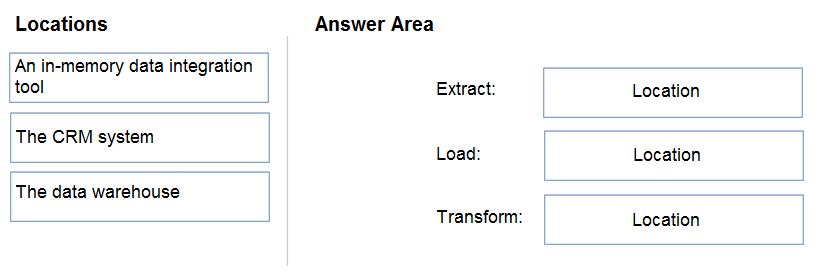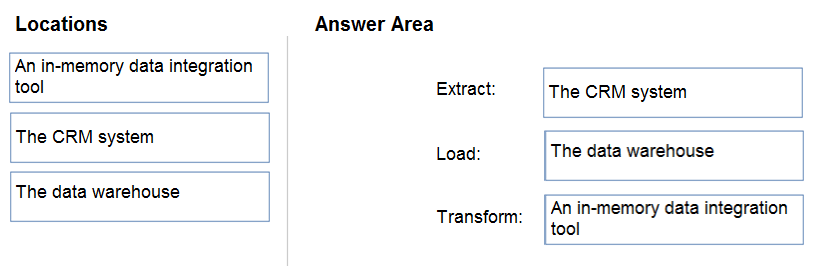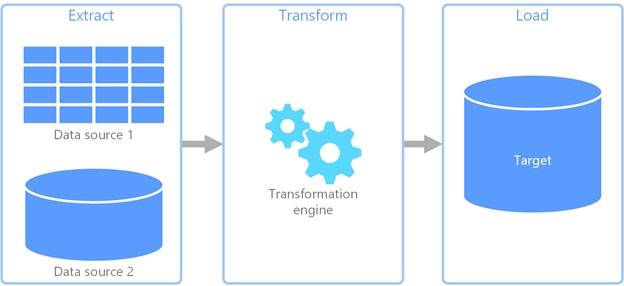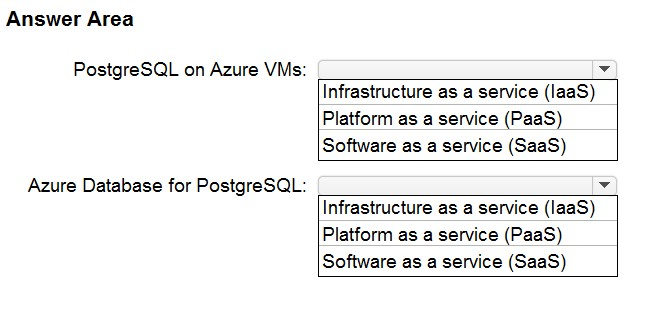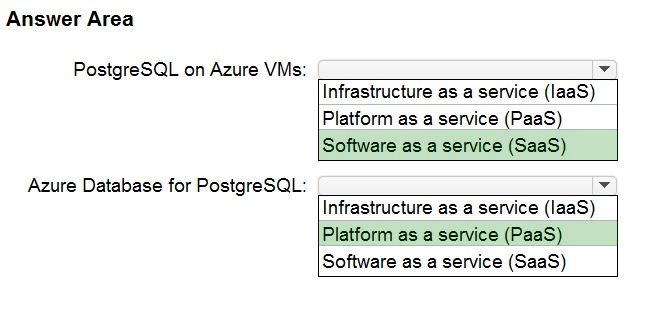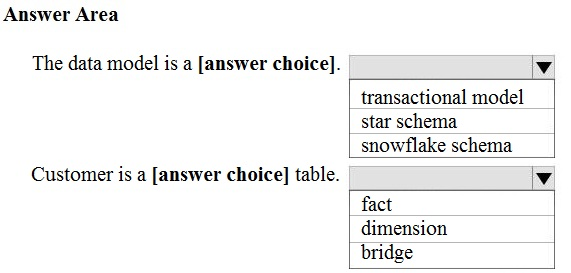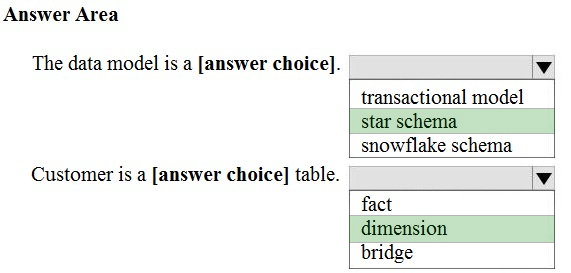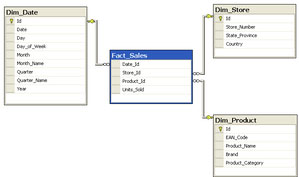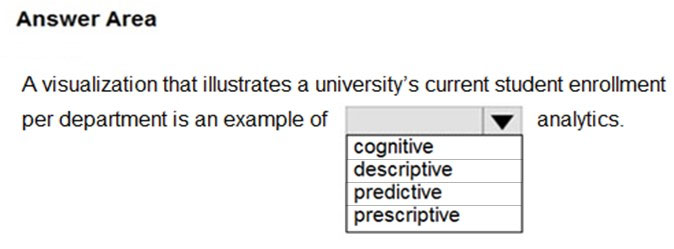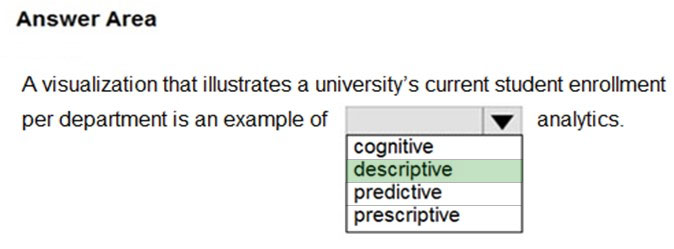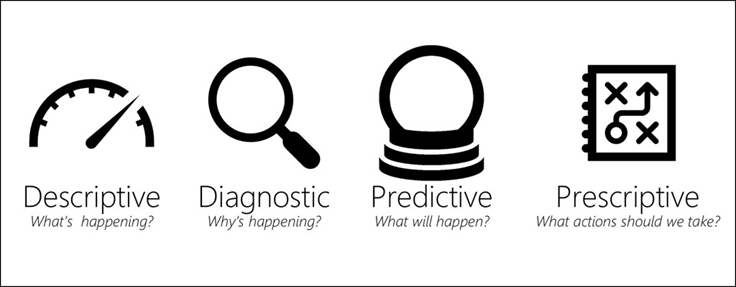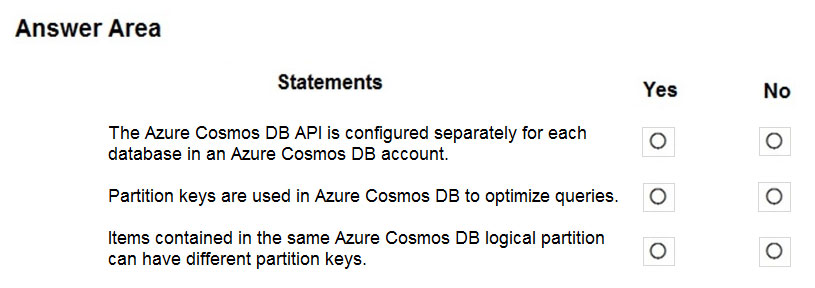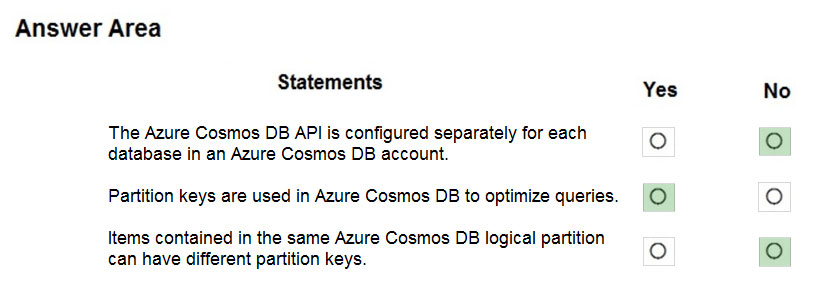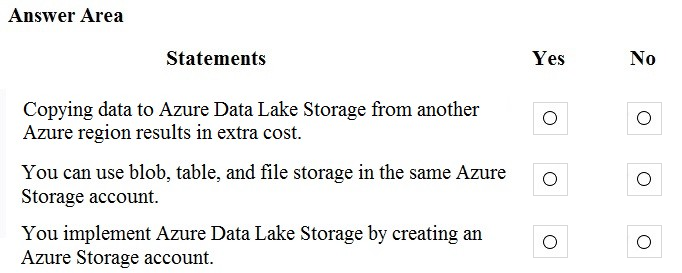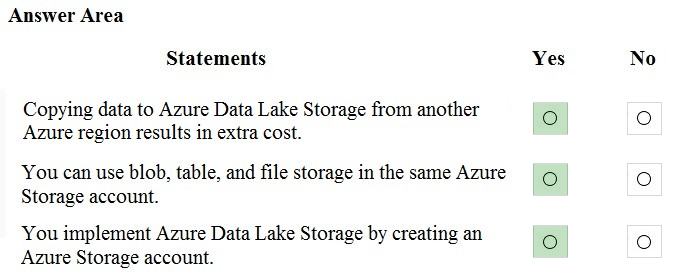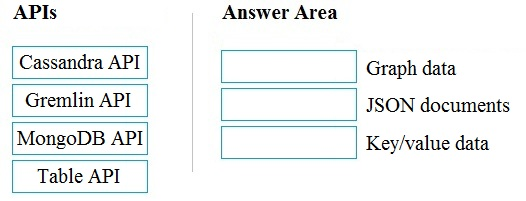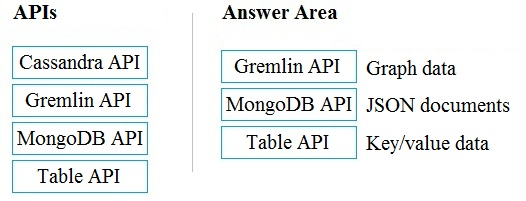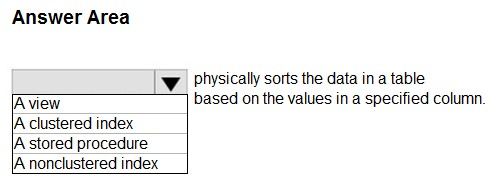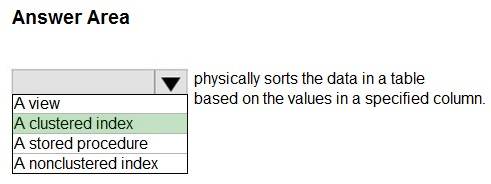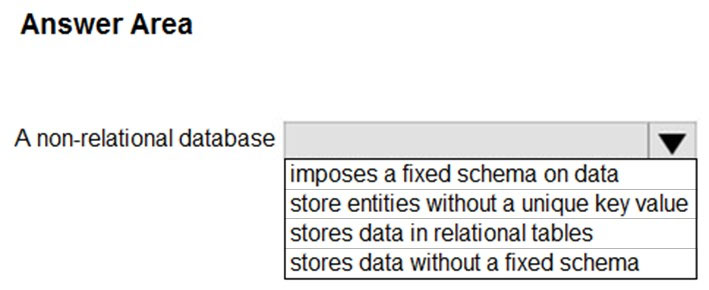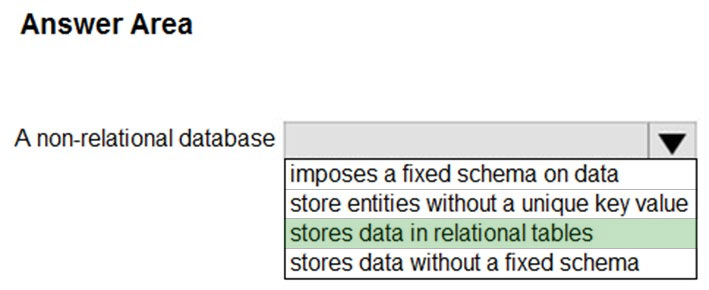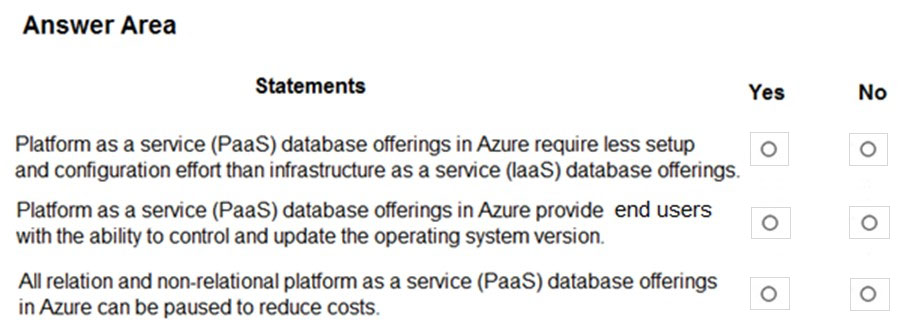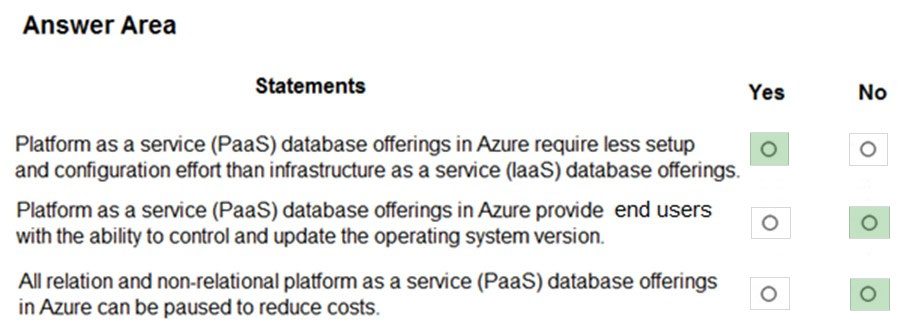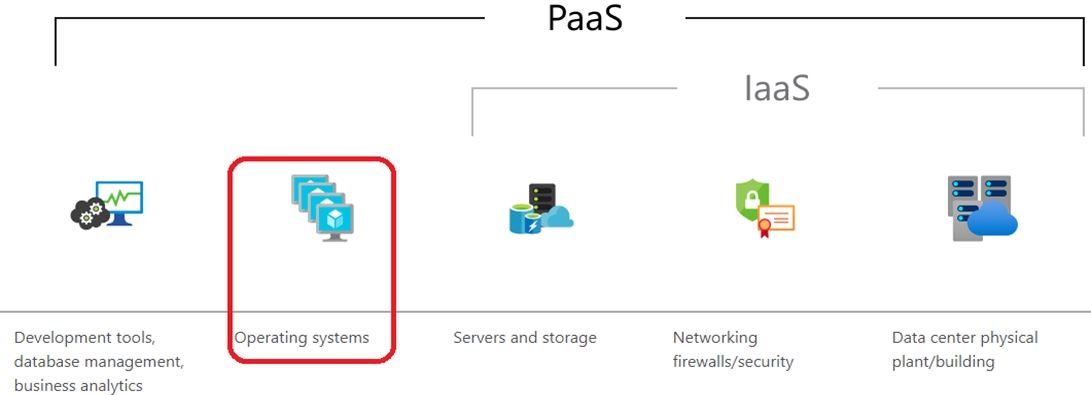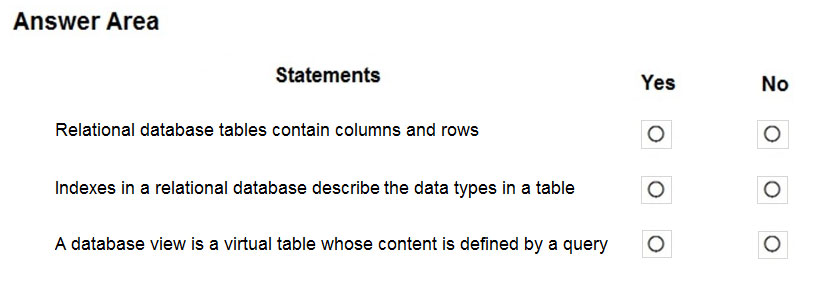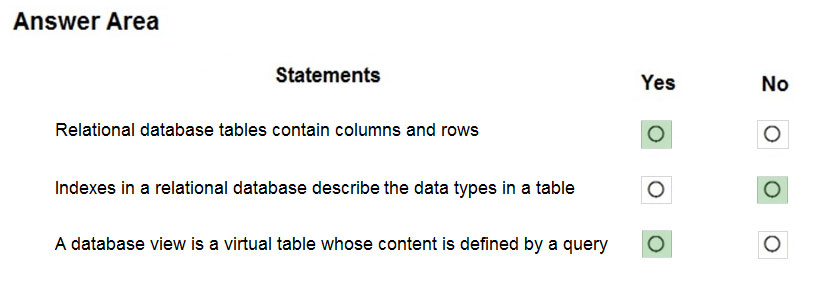DP-900 Practice Exam Free – 50 Questions to Simulate the Real Exam
Are you getting ready for the DP-900 certification? Take your preparation to the next level with our DP-900 Practice Exam Free – a carefully designed set of 50 realistic exam-style questions to help you evaluate your knowledge and boost your confidence.
Using a DP-900 practice exam free is one of the best ways to:
- Experience the format and difficulty of the real exam
- Identify your strengths and focus on weak areas
- Improve your test-taking speed and accuracy
Below, you will find 50 realistic DP-900 practice exam free questions covering key exam topics. Each question reflects the structure and challenge of the actual exam.
You have an inventory management database that contains the following table.Which statement should you use in a SQL query to change the inventory quantity of Product1 to 270?
A. INSERT
B. MERGE
C. UPDATE
D. CREATE
What are three characteristics of an Online Transaction Processing (OLTP) workload? Each correct answer presents a complete solution. NOTE: Each correct selection is worth one point.
A. denormalized data
B. heavy writes and moderate reads
C. light writes and heavy reads
D. schema defined in a database
E. schema defined when reading unstructured data from a database
F. normalized data
DRAG DROP - Your company plans to load data from a customer relationship management (CRM) system to a data warehouse by using an extract, load, and transform (ELT) process. Where does data processing occur for each stage of the ELT process? To answer, drag the appropriate locations to the correct stages. Each location may be used once, more than once, or not at all. You may need to drag the split bar between panes or scroll to view content. NOTE: Each correct selection is worth one point. Select and Place:
HOTSPOT - Select the answer that correctly completes the sentence. Hot Area:
What can be used with native notebook support to query and visualize data by using a web-based interface?
A. Azure Databricks
B. pgAdmin
C. Microsoft Power BI
HOTSPOT - Select the answer that correctly completes the sentence. Hot Area:
HOTSPOT - Select the answer that correctly completes the sentence. Hot Area:
HOTSPOT - To complete the sentence, select the appropriate option in the answer area. Hot Area:
HOTSPOT - You plan to deploy a PostgreSQL database to Azure. Which hosting model corresponds to the available deployment options? To answer, select the appropriate options in the answer area. NOTE: Each correct selection is worth one point. Hot Area:
SELECT, INSERT, and UPDATE are examples of which type of SQL statement?
A. Data Definition Language (DDL)
B. Data Control Language (DCL)
C. Data Manipulation Language (DML)
You plan to deploy an app. The app requires a nonrelational data service that will provide latency guarantees of less than 10-ms for reads and writes. What should you include in the solution?
A. Azure Blob storage
B. Azure Files
C. Azure Table storage
D. Azure Cosmos DB
HOTSPOT - For each of the following statements, select Yes if the statement is true. Otherwise, select No. NOTE: Each correct selection is worth one point.
DRAG DROP - Match the database normalization terms to the appropriate descriptions. To answer, drag the appropriate term from the column on the left to its description on the right. Each term may be used once, more than once, or not at all. NOTE: Each correct match is worth one point.
You need to use Transact-SQL to query files in Azure Data Lake Storage Gen 2 from an Azure Synapse Analytics data warehouse. What should you use to query the files?
A. Azure Functions
B. Microsoft SQL Server Integration Services (SSIS)
C. PolyBase
D. Azure Data Factory
HOTSPOT - Select the answer that correctly completes the sentence.
HOTSPOT - You are reviewing the data model shown in the following exhibit.Use the drop-down menus to select the answer choice that completes each statement based on the information presented in the graphic. NOTE: Each correct selection is worth one point Hot Area:
When can you use an Azure Resource Manager template?
A. to automate the creation of an interdependent group of Azure resources in a repeatable way
B. to apply Azure policies for multi-tenant deployments
C. to provision Azure subscriptions
D. to control which services and feature administrators and developers can deploy from the Azure portal
HOTSPOT - Select the answer that correctly completes the sentence.
HOTSPOT - For each of the following statements, select Yes if the statement is true. Otherwise, select No. NOTE: Each correct selection is worth one point.
HOTSPOT - To complete the sentence, select the appropriate option in the answer area. Hot Area:
You have a data store that has the structure shown in the following exhibit.Which type of data store is this?
A. key/value
B. object data
C. graph
D. time series
What is the primary purpose of a data warehouse?
A. to provide answers to complex queries that rely on data from multiple sources
B. to provide transformation services between source and target data stores
C. to provide read-only storage of relational and non-relational historical data
D. to provide storage for transactional line-of-business (LOB) applications
You have the following data.Which type of data is this?
A. unstructured
B. semi-structured
C. structured
Which statement is an example of Data Definition Language (DDL)?
A. SELECT
B. JOIN
C. UPDATE
D. CREATE
HOTSPOT - To complete the sentence, select the appropriate option in the answer area. Hot Area:
Which three objects can be added to a Microsoft Power BI dashboard? Each correct answer presents a complete solution. NOTE: Each correct selection is worth one point.
A. a report page
B. a Microsoft PowerPoint slide
C. a visualization from a report
D. a dataflow
E. a text box
Which language is used to define queries in Azure Synapse Data Explorer?
A. Bash
B. PowerShell
C. KQL
D. SQL
You need to create an Azure Storage account. Data in the account must replicate outside the Azure region automatically. Which two types of replication can you use for the storage account? Each correct answer presents a complete solution. NOTE: Each correct selection is worth one point.
A. zone-redundant storage (ZRS)
B. read-access geo-redundant storage (RA-GRS)
C. locally-redundant storage (LRS)
D. geo-redundant storage (GRS)
HOTSPOT - Select the answer that correctly completes the sentence. Hot Area:
Your company needs to design a database that shows how changes in network traffic in one area of a network affect network traffic in other areas of the network. Which type of data store should you use?
A. graph
B. key/value
C. document
D. columnar
HOTSPOT - For each of the following statements, select Yes if the statement is true. Otherwise, select No. NOTE: Each correct selection is worth one point. Hot Area:
You need to gather real-time telemetry data from a mobile application. Which type of workload describes this scenario?
A. Online Transaction Processing (OLTP)
B. batch
C. massively parallel processing (MPP)
D. streaming
What is used to define a query in a stream processing jobs in Azure Stream Analytics?
A. YAML
B. KQL
C. SQL
D. XML
At which two levels can you set the throughput for an Azure Cosmos DB account? Each correct answer presents a complete solution. NOTE: Each correct selection is worth one point.
A. database
B. item
C. container
D. partition
HOTSPOT - For each of the following statements, select Yes if the statement is true. Otherwise, select No. NOTE: Each correct selection is worth one point. Hot Area:
DRAG DROP - Match the Azure Cosmos DB APIs to the appropriate data structures. To answer, drag the appropriate API from the column on the left to its data structure on the right. Each API may be used once, more than once, or not at all. NOTE: Each correct match is worth one point. Select and Place:
Which two activities can be performed entirely by using the Microsoft Power BI service without relying on Power BI Desktop? Each correct answer presents a complete solution. NOTE: Each correct selection is worth one point.
A. report and dashboard creation
B. report sharing and distribution
C. data modeling
D. data acquisition and preparation
HOTSPOT - Select the answer that correctly completes the sentence. Hot Area:
HOTSPOT - To complete the sentence, select the appropriate option in the answer area. Hot Area:
You have a quality assurance application that reads data from a data warehouse. Which type of processing does the application use?
A. Online Transaction Processing (OLTP)
B. batch processing
C. Online Analytical Processing (OLAP)
D. stream processing
What is a benefit of hosting a database on Azure SQL managed instance as compared to an Azure SQL database?
A. built-in high availability
B. native support for cross-database queries and transactions
C. system-initiated automatic backups
D. support for encryption at rest
HOTSPOT - Select the answer that correctly completes the sentence. Hot Area:
HOTSPOT - Select the answer that correctly completes the sentence. Hot Area:
HOTSPOT - Select the answer that correctly completes the sentence.
HOTSPOT - To complete the sentence, select the appropriate option in the answer area. Hot Area:
DRAG DROP - Match the tools to the appropriate descriptions. To answer, drag the appropriate tool from the column on the left to its description on the right. Each tool may be used once, more than once, or not at all. Select and Place:
HOTSPOT - Select the answer that correctly completes the sentence. Hot Area:
HOTSPOT - For each of the following statements, select Yes if the statement is true. Otherwise, select No. NOTE: Each correct selection is worth one point. Hot Area:
HOTSPOT - For each of the following statements, select Yes if the statement is true. Otherwise, select No. NOTE: Each correct selection is worth one point. Hot Area:
HOTSPOT - To complete the sentence, select the appropriate option in the answer area. Hot Area:
Free Access Full DP-900 Practice Exam Free
Looking for additional practice? Click here to access a full set of DP-900 practice exam free questions and continue building your skills across all exam domains.
Our question sets are updated regularly to ensure they stay aligned with the latest exam objectives—so be sure to visit often!
Good luck with your DP-900 certification journey!


